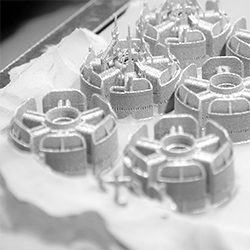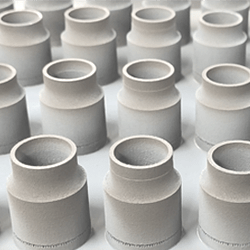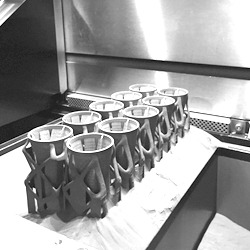3D metal printing: specifications & materials
Printing materials:
- Titanium (TiAl6V4): Strong – Light – Durable
Components printed with the titanium alloy TiAl6V4 are both strong and extremely light. The material is also corrosion resistant which makes titanium a perfect material to print medical and aerospace applications.
- Aluminum (AlSi10Mg): Thermal – Light – Complex geometry
Ideal alloy to manufacture components with complex geometries with thin wall structures. Components printed in aluminum are perfect for applications where a good combination between excellent thermal characteristics and lightness is required.
TECHNICAL SPECIFICATIONS:
Construction table:
250x250x300mm
Minimum wall thickness:
Ti64: 0.3mm
AlSi10Mg: 0.5mm
Powder layer thickness:
Ti64: 0.03 – 0.1mm
AlSi10Mg: 0.03 – 0.1mm



